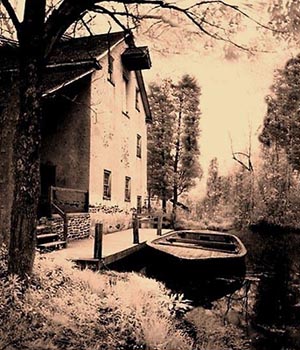Infrared Photography stemmed from experimentation in the
early 20th Century by American physicist Robert W. Wood,
who developed special infrared sensitive photographic
plates. Wood is credited with discovering the unusual
effects in landscape photography, now known as the Wood
Effect, in which grasses and foliage take on a
pronounced glow. In 1910 the Century Magazine and
in the Royal Photographic Society Journal published his
works.
In the
1930s Kodak introduced the first commercial infrared
sensitive emulsions. Within several years there were
four additional manufacturers, including Agfa and
Ilford, and as many as 33 different infrared sensitive
films were available. Then in the 1960s Kodak introduced
a commercial color reversal film sensitive to infrared,
named Kodak Infrared EIR in 35mm rolls. This film, which
produced strange and vibrant false-color images,
became popular and widely used within the psychedelic
culture.
In the last three decades of the 20th
Century a number of photographers used Black & White
Infrared films for serious studies, notably Simon
Marsden in the U.K., Elio Ciol in Italy, Joseph Paduano
in the U.S. and Martin Reeves also in the U.K. Black &
White prints were often enhanced by sepia toning or with
hand coloring with special paints. Additionally numerous
scientific applications for IR photography were found in
the medical, military, forensic and astronomic fields.
With the
invention and development of digital photography, IR
photography has taken on a new dimension. Almost all
contemporary digital camera sensors have sensitivity in
the infrared spectrum. Therefore in most instances
images can be made based on sensor responses to
either visible or infrared reflected
wavelenghts, or both. This is done by the addition of special filters, either
on the camera's lens or internally directly to the
sensor.
The popularity of IR photography has grown expotentially
in recent years, with photographers around the world
applying digital techniques to landscape, portrait,
wedding photography and even in journalism. The
expectations are that over time IE photography will also
gain cachet in the Fine Art world, and that asperhaps the
new millenium unfolds a spectacular legacy will be
ushered in,
touching all corners of the globe. by Georg
Kremer, email:
editor@monograffi.com
|